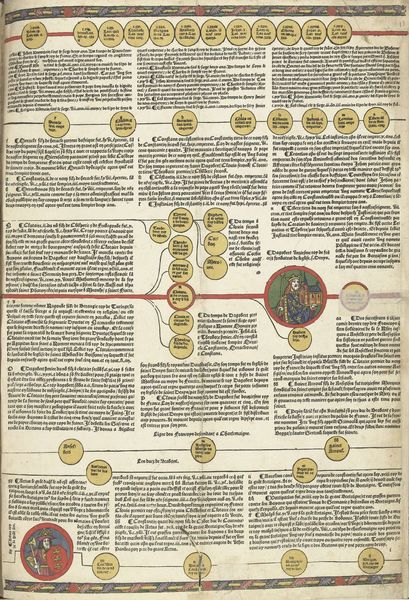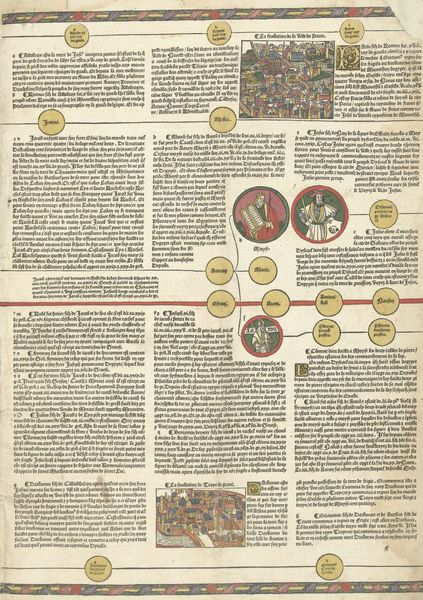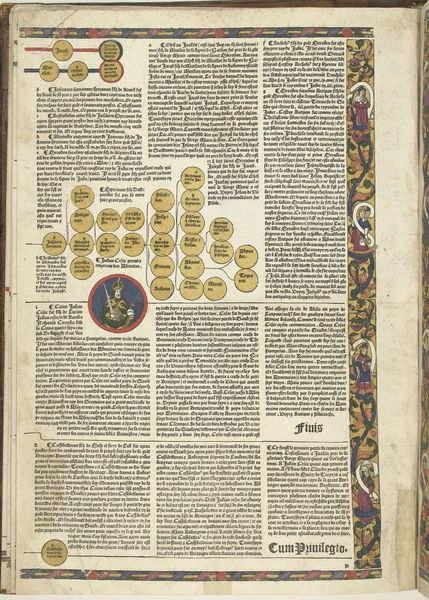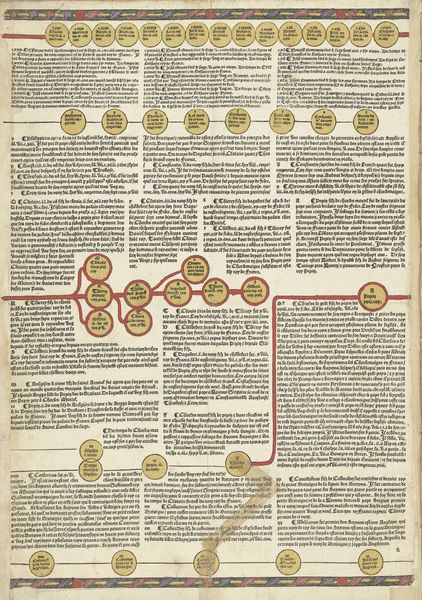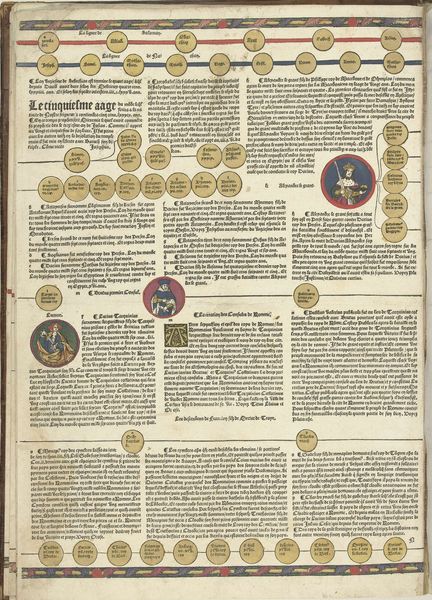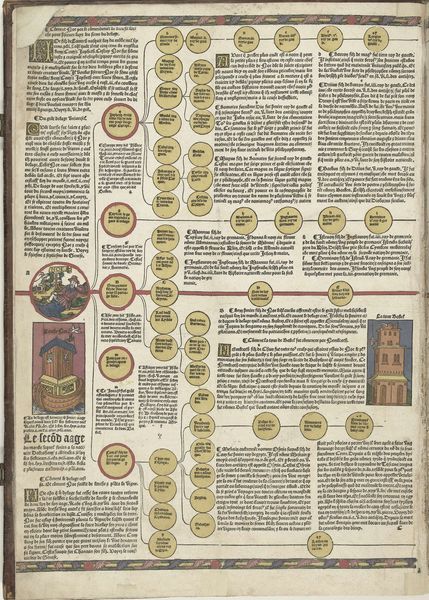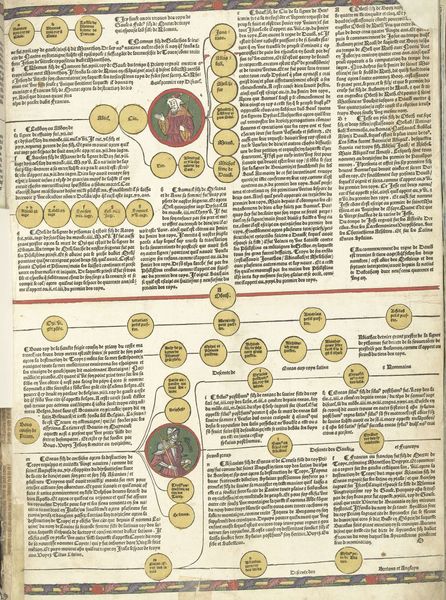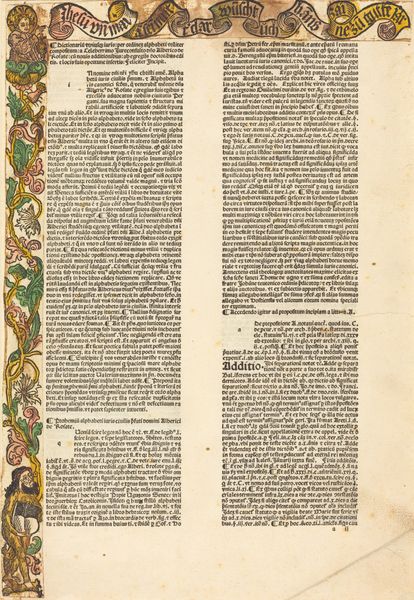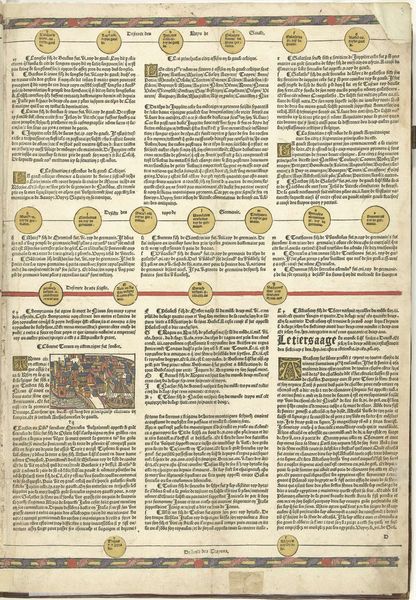
drawing, paper, ink
#
drawing
#
medieval
#
narrative-art
#
paper
#
ink
#
geometric
#
miniature
Dimensions: height 549 mm, width 380 mm
Copyright: Rijks Museum: Open Domain
Curator: I find this page from "Cronica Cronicarum (...), blad 9 recto," an anonymous work possibly dating from 1521 to 1529, truly captivating. The ink drawing on paper presents a fascinating visual blend of text, image, and geometric form. Editor: Yes, an intriguing visual puzzle! At first glance, the organizational diagram really grabs my attention—all those circles and lines implying relationships—contrasting sharply with the dense, blocky text filling the majority of the space. The border illustration is striking, also. Curator: Precisely. This artwork existed within a cultural context profoundly shaped by both religious doctrine and nascent humanist inquiry. Consider how printed chronicles like these helped disseminate knowledge, reinforce societal structures, and define historical narratives for a wider public. The hierarchical relationships shown in that chart might well represent political dynasties or lineage important at the time of production. Editor: Absolutely. Structurally, it seems the anonymous creator balanced ornate decoration, such as that side strip of illustrations featuring various symbolic objects like roses and figures— against more rigorous geometrical layouts in that upper portion of the page, to unify elements—even when those components seem almost jarring when juxtaposed on the page as a whole. Curator: Indeed, the combination of visual elements, like those miniatures illustrating certain events, with dense text underlines that interplay. We should consider what its reception might have been at that moment in history. Did audiences feel visually instructed, culturally enriched, or both? I think it challenges modern preconceptions of information dissemination, especially with its blending of religious symbolism alongside historical events. Editor: Good point. Now I find myself thinking of the texture created by all that repetitive text against the bold red lines of that intricate diagram. It is such an intricate arrangement—certainly deliberate—but the full impact is in those intentional contrasts, making the viewer really look to find connections. Curator: Exactly, the art prompts so much interpretation, making our efforts here quite compelling. Editor: And maybe even offering its original readers a unique combination of edification and delight!
Comments
No comments
Be the first to comment and join the conversation on the ultimate creative platform.
